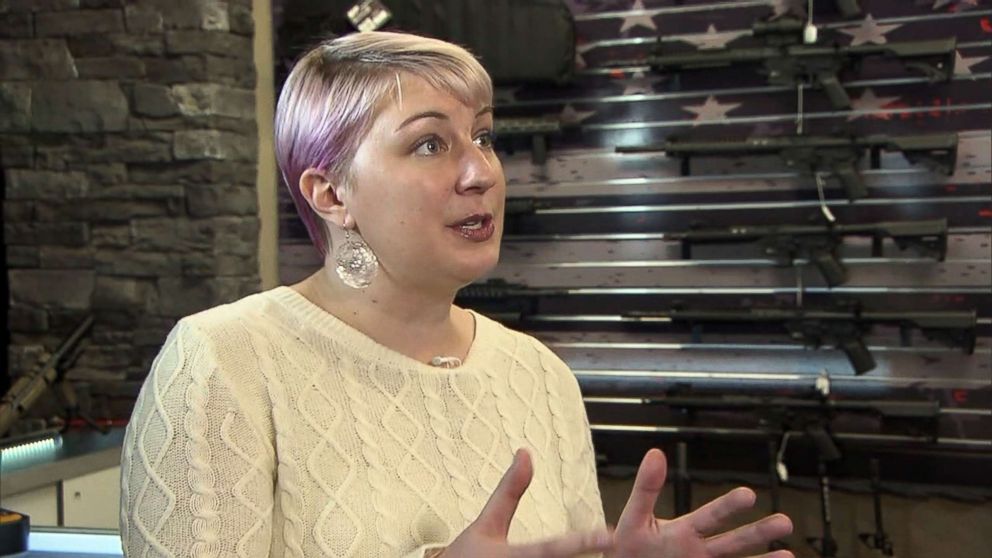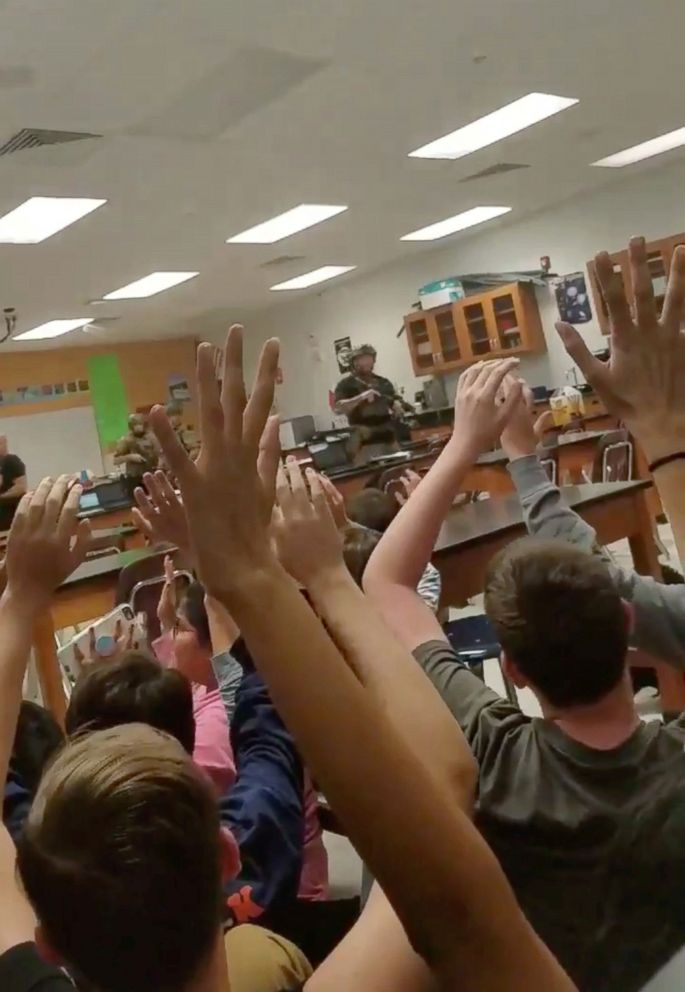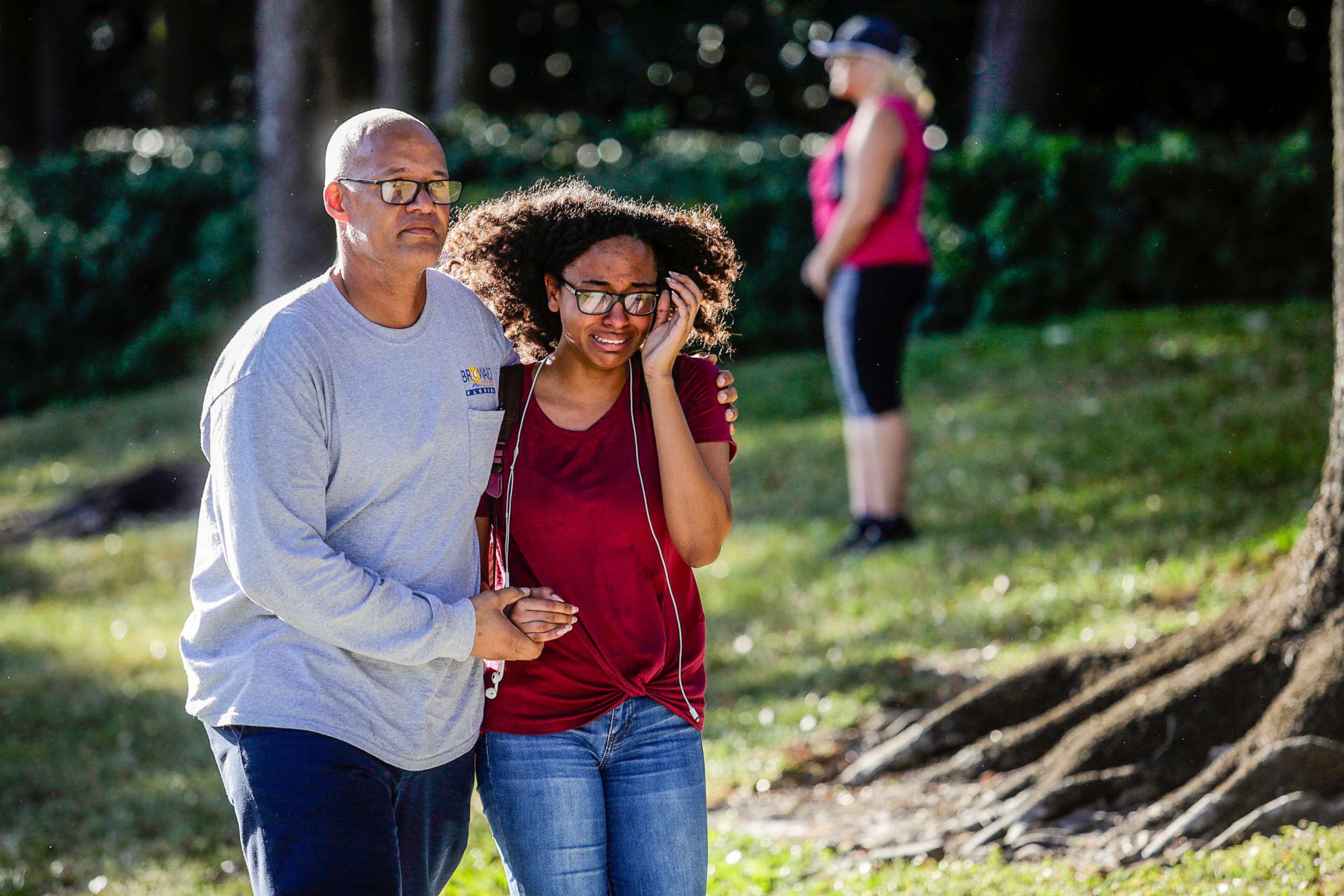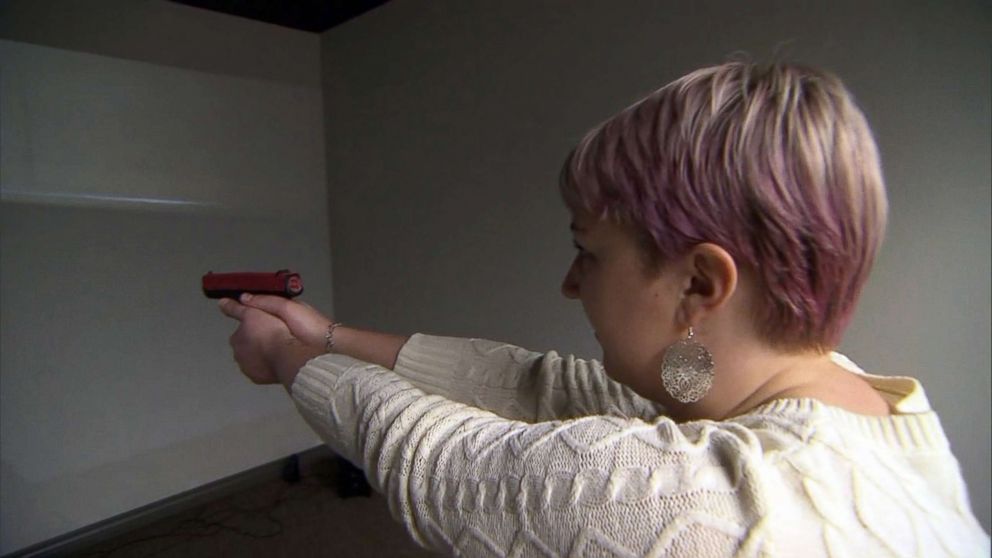Why this Utah teacher says she supports arming teachers with guns in schools
"I'm just a teacher who wants to protect her students."
— -- Kasey Hansen did not grow up with guns around the house, never mind owning one.
By 2012, she was a new teacher and had maybe only fired a gun twice in her entire life. That all changed after the massacre at Sandy Hook Elementary School.
“It broke my heart to think that all the teachers could do was huddle their kids in a corner, stand in front of them and pray that nothing was going to come through that classroom door,” Hansen told ABC News’ “Nightline.”
Today, Hansen, who teaches special education, brings her gun to school where she works in Utah, a state where carrying a concealed firearm is legal with a permit.
“I have different holsters that go on different parts. And so depending on my outfit is where the gun goes,” Hansen said.

Questions about whether teachers should be armed in schools have surfaced on the national debate stage, following the deadly shooting at Marjory Stoneman Douglas High School in Parkland, Florida, on Feb. 14.A beloved football coach and college-bound high school seniors were among the 17 people killed, and more than a dozen others were injured. The suspect, a former student, was arrested and charged with premeditated murder.

Now many of Marjory Stoneman Douglas High School students have channeled their grief to anger and anger into activism. Protests have sprung up in cities from Florida to Washington, D.C., with many calling on lawmakers to make significant changes to gun laws.
According to an ABC News/Washington Post poll, 42 percent of people surveyed say the Parkland shooting could have been prevented if teachers carried guns.
But 58 percent of those polled said stricter gun laws could have stopped the killings.
In 2016, the American Medical Association (AMA) made a statement saying that “gun violence represents a public health crisis which requires a comprehensive public health response and solution.” The AMA also supports bans on the possession and use of firearms and ammunition by unsupervised youths under the age of 18 and the mandatory inclusion of safety devices on all firearms, whether manufactured or imported into the United States.
The American Academy of Pediatrics (AAP) has a policy statement on firearm-related injuries affecting children, which states that the “absence of guns from children’s homes and communities is the most reliable and effective measure to prevent firearm-related injuries in children and adolescents.” According to the AAP, the U.S. has the highest rates of firearm-related deaths among high-income countries, and 84.5 percent of all homicides of people ages 15 to 19 were firearm-related in 2009. The AAP also noted that for kids ages 10 to 17, guns are the method used for 40 percent of suicides.
The AAP supports stronger gun laws, including stronger background checks, banning assaults weapons and addressing firearm trafficking. In their priorities for gun violence prevention, the AAP advocates for violence prevention programs, more funding for gun violence prevention research, physician counseling on the health hazards of firearms and mental health access for children and their families, particularly to address the effects of exposure to violence.
At a listening session with high school shooting survivors and students at the White House on Wednesday, President Donald Trump said concealed carrying “only works when you have people adept at using firearms.” And in a recent tweet, Trump wrote, “Highly trained, gun adept, teachers/coaches would solve the problem instantly, before police arrive.”
Melissa Falkowski, who teaches newspaper, English and creative writing at Marjory Stoneman Douglas, told ABC News that the shooting has left her feeling “failed by society, failed by the state, failed by Congress.”
“Because they’ve just, on this particular issue, have been taken no action in recent years, and so I just feel like what happened to us was totally preventable,” she said.

Falkowski said she and 19 of her students hid in a closet in her classroom during the Feb. 14 shooting. She called the notion of training teachers on how to use weapons and arming them in schools as a way to combat school shooters was “absurd.”
“The logistics of it make no sense,” she said. “Like in this scenario [at Marjory Stoneman Douglas], [the shooter] was wearing full body armor, with this AR-15 … shooting down the hallways as a barrage of bullets, and he’s wearing protective headgear, and so you’re going to take a teacher who’s concealed carrying some kind of handgun and you’re going to pit them against somebody who has an AR-15 and full body armor, and so that is not a fair fight.”
“And in that moment,” Falkowski continued, “the teachers are shielding the students, throwing themselves on top of the kids, and trying to comfort for them and put them in a place where they can be safe and out of his view and out of his way, and so they don’t have time to react to ‘Oh my gosh, let me go into this locked cabinet and get a gun,’ and so I don’t think in this scenario that it would have helped.”

Randi Weingarten, the president of the American Federation of Teachers, said there was a telephone town hall with 60,000 teachers Wednesday night and "the response was universal, even from educators who are gun owners: teachers don't want to be armed, we want to teach."
"We don’t want to be, and would never have the expertise needed to be, sharpshooters; no amount of training can prepare an armed teacher to go up against an AR-15," Weingarten said in a statement released by the AFT.
"How would arming teachers even work? Would kindergarten teachers be carrying guns in holsters? Is every classroom now going to have a gun closet? Will it be locked? When you have seconds to act when you hear the code for an active shooter, is a teacher supposed to use those seconds getting her gun instead of getting her students to safety?" she said in the statement. "Anyone who pushes arming teachers doesn’t understand teachers and doesn’t understand our schools. Adding more guns to schools may create an illusion of safety, but in reality it would make our classrooms less safe."
Kasey Hansen said she believes teachers should have the ability to defend their students.
“I'm just a teacher who wants to protect her students. I'm not going to roam the halls if I hear lockdown is occurring and someone's in the building. I'm not going to go looking for him,” Hansen said. “That's not my job. My job is to lock the classroom. Turn off all the lights. Get the kids in the corner and be ready.”
While some might argue that people in schools during a shooting should wait for police, Hansen said that might take too long.
“How long is it going to take for the police to get there? And how long is it going to take for them to roam the halls? My school is a big school,” Hansen said. “The gunman could be anywhere. He could be in my room clear across campus and it's going to take a while for the police to figure out.”

Following the Sandy Hook Elementary School shooting, Hansen said it was her mom who encouraged her to take a concealed carry class.
“I wasn't planning on buying a gun. It was just information. And I learned about gun safety. I learned about the gun laws. I learned about protection. It was educational,” Hansen said. “It got me thinking, ‘What would I do if a shooting at my school happened?’”
Hansen said she doesn’t tell her students when she is carrying her gun and might not always have it on her. She also believes people shouldn’t need to know whether or not she is carrying her gun.
“It's my personal choice, and it's my right to decide that. And so why tell anyone?” she said. “I almost feel like I would be a target if I announce to my boss, if I announce to my students, if I announce to my parents, ‘Hey guess what? Today I'm wearing a gun. Just FYI.’”
Hansen said she also likes the idea of retired military being employed by schools for security.
“I wish more schools would implement it,” she said. “I don't think the protection and the security should be on teachers.”
For those hesitant about using guns, Hansen said practice and education are key.
“And if you know how to handle it, if you know what you're doing, and if you start to practice your mindset and start to visualize, ‘OK, where would I go in my school? Where would I be? How would I protect my students?’” Hansen said. “If you start that visualization and that thought process, it's really not as scary as you might think.”
ABC News' Meghan Keneally contributed to this story.
Jay-Sheree Allen, MD, a resident in the ABC News Medical Unit, contributed to this story.




